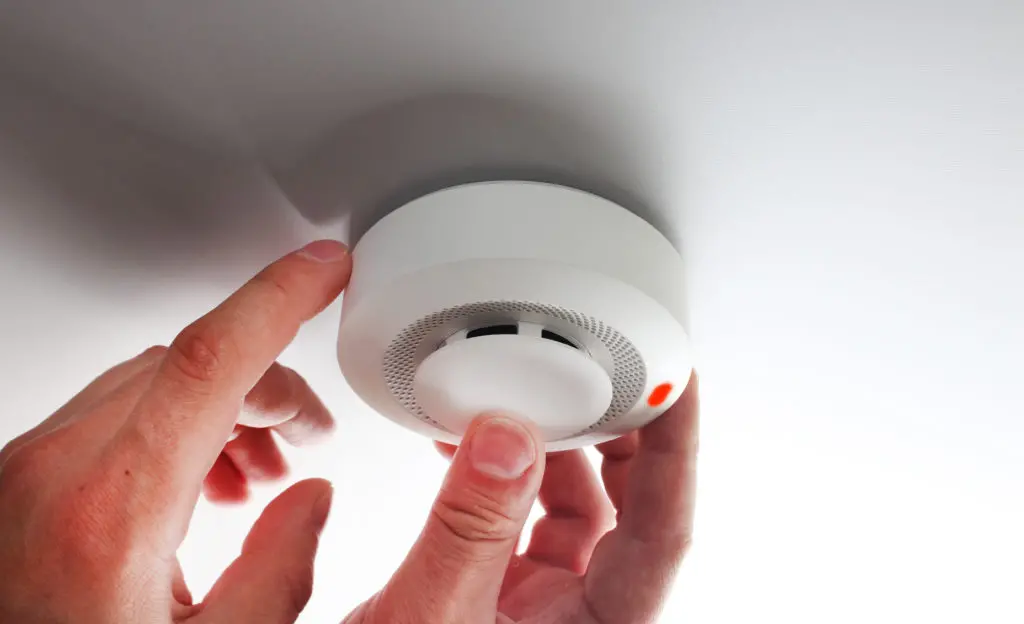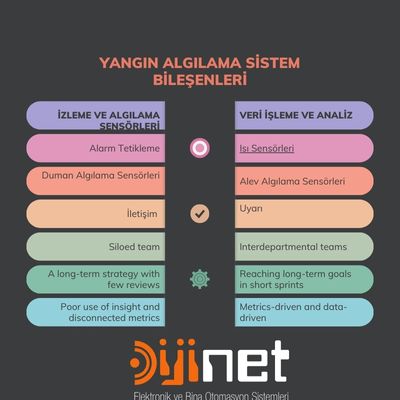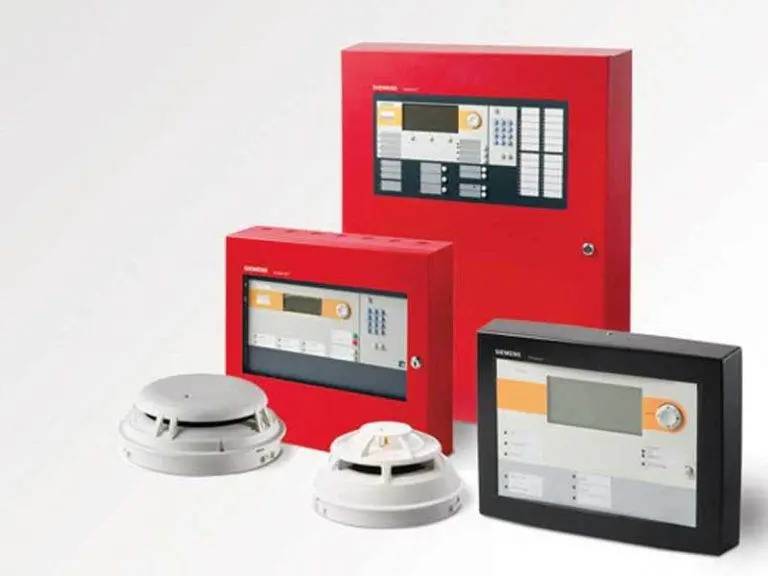Fires are one of the most destructive events that occur in buildings from natural disasters. The rapid spread of fires and their potential for causing significant damage makes fire safety measures of vital importance. Fire detection systems help in the early detection of fires, allowing for timely intervention. So, how does the fire alarm system work? Here’s all you need to know about this topic!
Fire detection systems play a critical role in minimizing the damages caused by fires through early detection and swift intervention. Monitoring sensors, data processing, analysis, and alarm triggering mechanisms ensure the effective operation of these systems. With advancing technology, fire detection systems will become even more sensitive, faster, and reliable in protecting buildings and structures from fire. This is a significant advantage for our safety. Fire detection systems consist of four different components as listed below.
- Monitoring and Detection Sensors
- Data Processing and Analysis
- Alarm Triggering
- Communication and Warning,

Monitoring and Detection Sensors
The fundamental components of fire detection systems are various monitoring and detection sensors. Here are the most commonly used sensors:
Heat Sensors
Heat sensors monitor changes in temperature in the environment. They can trigger an alarm in the early stages of a fire by detecting abnormal temperature increases in a specific area.
Smoke Detection Sensors
Smoke detection sensors identify the presence of smoke in the environment. These sensors detect the presence of smoke by measuring particulate matter density.
Flame Detection Sensors
Flame detection sensors monitor optical changes that occur during the combustion process. By detecting the image of flames, these sensors can determine the presence of a fire.
Data Processing and Analysis
Detection sensors transmit the data they collect to the central processing unit of fire detection systems, where it is analyzed. During this stage, the data collected by the sensors is examined, and potential fire situations are evaluated. For example, when an abnormal increase in temperature or a significant rise in smoke density is detected, a fire alarm can be triggered.
Alarm Triggering
In the data processing stage, when critical threshold values are reached or abnormal conditions are detected, the fire detection system automatically triggers the alarm. This alarm can take the form of visual and auditory alerts. The fire alarm enables the building’s occupants and authorities to respond rapidly to the fire.
Communication and Warning
Modern fire detection systems are not limited to local alerts. They can also automatically alert security personnel, the fire department, or other emergency teams. This communication typically occurs through wired or wireless networks.
Fire alarm systems offer a significant advantage in the field of security provided by modern technology. They play a critical role in providing early warning and enabling rapid intervention, minimizing loss of life and property. Regular maintenance and testing of these systems are vital to ensure their reliability. Now, let’s provide an answer to the question of how fire detection works.

How Does a Fire Alarm System Work?
Fire has historically been one of the most dangerous and destructive events that people have faced. Therefore, fire alarm systems are of vital importance for the safety of buildings and facilities. These systems are designed to prevent the spread of fires, minimize casualties, and limit property damage through early warning and rapid intervention. The following five stages explain the operation of fire alarm systems:
Detection Stage
Fire alarm systems primarily use sensors and detectors designed to detect a potential fire. These sensors can detect the initial signs of a fire, such as smoke, heat, and flames. Fire detectors typically use ionization or optical sensors to detect environmental changes. Heat sensors identify abnormal increases in temperature, signaling the presence of a fire.
Information Transmission Stage
Related Topic: Comprehensive Guide on Fire Detection, and Fire Alarm Systems
Notification and Warning Stage
After the control panel detects the fire hazard, the alarm system can send various forms of alerts and notifications. These may include audible and visual warnings, announcements through speakers, emergency lights, and even digital notifications like SMS or email. The goal is to inform building occupants about the fire hazard and assist in evacuation.
Intervention and Monitoring Stage
Fire alarm systems are typically connected to a security or fire monitoring center. This center receives the alarm status notification and directs emergency services when necessary. Additionally, in some systems, it can automatically activate fire suppression systems, such as water sprinklers or foam extinguishing systems.
Intervention Stage
When the fire alarm is triggered, building occupants or designated personnel should safely evacuate the building using predetermined emergency exit routes. While the fire alarm system provides early warning and enables swift intervention, it is of great importance that individuals adhere to fire safety protocols.
In light of all this information, fire alarm systems are a life-saving reflection of modern technology. They enable early detection of fires, prevent loss of life, and minimize property damage. Proper installation of these systems, regular maintenance, and raising awareness about fire safety play a critical role in enhancing the security of buildings and facilities.
Dijinet Fire Detection and Notification System Solutions
Dijinet offers Siemens and Teledata products and solutions in the field of fire detection and notification systems to our valued customers. To explore the products, please visit:
1-Siemens Fire Detection and Notification Systems
2-Teledata Fire Detection and Notification Systems
Summary
We began our article by providing an overview of the components of fire detection systems and added detailed descriptions for these components.
- Monitoring and Detection Sensors
- Data Processing and Analysis
- Alarm Triggering
- Communication and Warning
Subsequently, we shared all the details of how fire alarm systems work.
- Detection Stage
- Information Transmission Stage
- Notification and Warning Stage
- Intervention and Monitoring Stage
.
